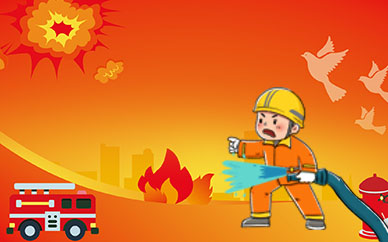

Content:
 (相关资料图)
(相关资料图)
VHF Communication Equipment
Using the Radio
Communicating Letters and Numbers
Communicating Time
Common Traffic Advisory Frequency (CTAF)
Communicating at Controlled Airports
Lost Communication Procedures
Emergency Communication Procedures
1. VFH Communication Equipment
Very High Frequency (VHF) Radios: Communication radios in general aviation aircraft:
Use the VHF range between 118.0 MHz and 135.975 MHz
Are classified according to the number of channels they have:
A 360-channel radio uses 50 kHz channel spacing (118.05, 118.10, 118.15, and so forth)
A 720-channel radio uses 25 kHz channel spacing (118.025, 118.050, 118.075, 118.100 and so forth)
To receive full ATC services, you need a 720-channel transceiver, particularly in busy terminal areas
VHF Radio Main Controls
Line of Sight
Terrain blocks VHF signals
Aircraft flying at higher altitudes are able to transmit and receive at greater distance:
500 ft. AGL - 28 n.m.
1,000 ft. AGL - 39 n.m.
1,500 ft. AGL - 48 n.m.
2,000 ft. AGL - 55 n.m.
3,000 ft. AGL - 69 n.m.
5,000 ft. AGL - 87 n.m.
10,000 ft. AGL - 122 n.m.
15,000 ft. AGL - 152 n.m.
20,000 ft. AGL - 174 n.m.
2. Using the Radio
Initial Radio Transmissions
As brief as possible
On the initial call, state:
Who you are calling
Who you are
Where you are
What type of service you are requesting
(Optional) ATIS information
Aircraft Call Signs
When identifying yourself, always provide:
Aircraft type, model, or manufacturer
Your aircraft registration number
Registration Number:
The first letter of your tail number indicates the country prefix (typically leave this letter out of the call sign in your registered country)
3. Communicating Letters and Numbers
Communicating Clearly and Effectively
Using standard phraseology, terminology, and pronunciation
Using the Phonetic Alphabet when communicating:
Your tail number
Airports
Navaids
ATIS information letters
Using Numbers on the Radio:
Pronounce each number as usual, except for 9, 3, 5
Pronounce each digit individually
For numbers in hundreds or thousands speak the individual digits followed by word "hundred" or "thousand"
500 - Five Hundred
4,500 - Four Thousand Fife Hundred
13,000 - One Tree Thousand
For altitudes at and above 18,000 feet MSL, ddo not use the word "thousand." Instead, preface the altitude with the words "Flight Level" followed by the separate digits, but excluding the last two numbers
Including Decimal Points
Include the decimal in radio frequencies only, not altimeter settings
Use the word "point" where the decimal occurs in the number
122.100 - One Two Two Point One
29.92 (Altimeter) - Altimeter Two Niner Niner Two
121.950 - One Two One Point Niner Fife
Identifying Number
Transponder - Squawk
Runway - Runway
Heading - Heading
Altimeter Setting - Altimeter
Wind - Wind
Flight Level - Flight Level
Airspeed - knots
4. Communicating Time
Converting Between 12-Hr and 24-Hr Clocks
Use the same number in the morning
Add twelve to the hour in the afternoon
Converting From Local Time to Zulu Time
Communicating Time
When communicating Zulu time:
Pronounce all digits individually
Give exact hours as the number followed by zero zero
Pronounce the leading zero
5. Common Traffic Advisory Frequency (CTAF)
At uncontrolled airports, use the CTF to:
Broadcast your position and intentions to other aircrafts in the rea
Receive airport advisories
Activate pilot-controlled lighting
Locate the CTAF for an airport:
In the Airport/Facility Directory
On aeronautical charts
From the nearest FSS
Using a CTAF
UNICOM
At airports with no tower:
Announce your position and intentions on the UNICOM
Request airport advisories from the UNICOM operator if desired
Request other information or services from the UNICOM operator if needed
Automated UNICOM systems, which are published in the Airport/Facility Directory, provide:
Automated weather, airport advisories, and radio checks
A greeting and instructions on how to access additional information
Self Announce Procedures:
When approaching an airport without a tower UNICOM:
Use the MULTICOM frequency (122.9 MHz)
Announce your position and intensions
When approaching an airport with a closed or part-time tower:
Use the published CTAF frequency
Broadcast your flight activity or ground operations
Follow CTAF Procedures During Arrival and Departure
Approaching an Uncontrolled Airport
Make your initial call when you are 10 miles from the airport
Report when you enter the downwind, base, and final legs of the traffic pattern
Report when you exit the runway
Departing an Uncontrolled Airport
When you start the engine
During taxi
Until you are 10 miles from the airport
Enroute Over an Uncontrolled Airport; Communicate your intentions within 20 miles of the airport, when
You are operating at altitudes used by arriving or departing aircraft
You are enroute over the area
6. Communicate at Controlled Airports
Air Traffic Control Clearance:
Authorize you to proceed under specific traffic conditions within controlled airspace
Are intended to prevent collisions between known aircraft and between aircraft and obstructions
Write down your clearance when there will be a significant delay before you comply, or when the clearance contains multiple instructions
To be sure you have understood correctly, read back your clearance to the controller. You must read back runway assignments and hold-short instructions contained in a taxi clearance
Responding to ATC
Interpreting ATC Instruction
Departure Communication Procedures
Arrival Communication Procedure
7. Lost Communication Procedures
If you are unable to contact ATC:
Ensure that you are using the correct frequency or try a different frequency if one is available
Check the volume and squelch
Check the switch position on your audio control panel
Verify that your mic is plugged into the jack. If you are wearing a headset, ensure that both the speaker and the mic plugs are in the jacks
Try the handheld mic if you are using a headset
If your aircraft is equipped with more than one radio, by the alternate transceiver
If it is within range, request assistance from the last facility you had contact with
If you believe your radio has failed:
Set your transponder to code 7600
Remain outside of Class D airspace until you determine the direction and flow of traffic
Transmit your aircraft type, position, and altitude, and your intention to land, and then request to be controlled by light signals
When you are in the airport traffic pattern:
Self-announce your position when you are on downwind or turning to base
Monitor the airport frequency for landing or traffic information
Maintain visual contact with the tower to receive light signals
Acknowledge tower transmissions or light signals by rocking your wings during the day or blinking your landing or navigation lights at night
Interpreting Light Signals
8. Emergency Communication Procedures
Distress and Urgency Situation
A Distress condition is one in which you are threatened by serious or imminent danger that requireds immdiate assistance, such as fire, mechanical failure, or structural failure
An Uergency condition occurs when you become apprehensive about your safety for any reason, but you do not require immediate assistance. For example, you might become doubtful about your position, fuel endurance, weather, or any other condition that could adversely affect flight safety
Follow Emergency Procedures
In an emergency situation:
Set your radio to 121.5 MHz
Indicate the type of condition you're in
Use the word MAYDAY to indicate a distress condition
Use the words PAN PAN to indicate an urgency condition
Change your transponder code to 7700
Emergency Services
Emergency Locator Transmitter Frequency
False ELT Signals
To minimize false ELT signals, monitor 121.5 MHz
During flight
Prior to engine shutdown
After maintenance
Maintaining Emergency Locator Transmitters
Test and maintain your ELT according to the manufacturer's instructions
Replace or recharge the battery:
After one-half of th battery's useful life
When the trasmitter has been in use for more than one cumulative hour
Whenever possible, test the ELT in a room that blocks the broadcast of signals
Conduct ELT testing in your aircraft only on the ground and only during the first five minutes after the hour, for no more than three audible sweeps. Do not test your ELT while airborn
标签:































